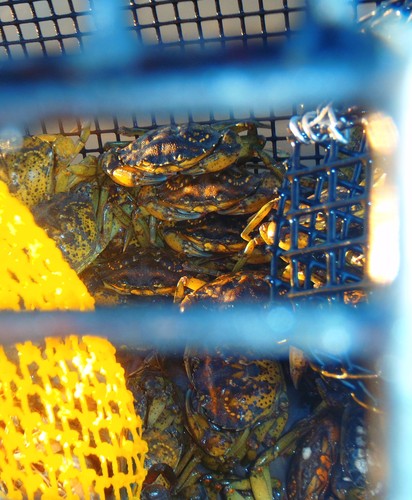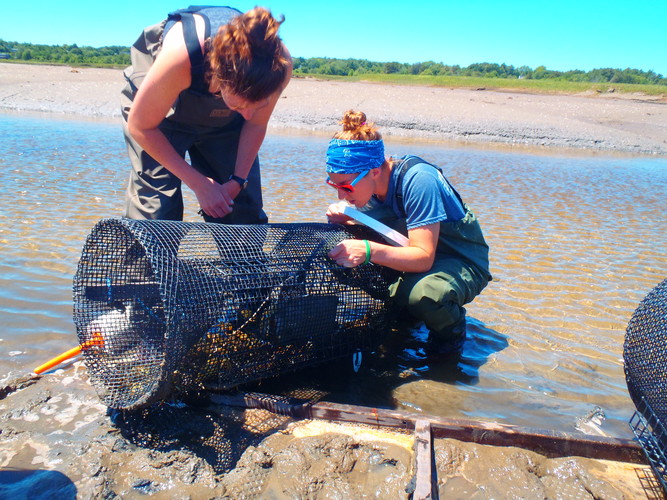The Wrack
The Wrack is the Wells Reserve blog, our collective logbook on the web.
The Wrack is the Wells Reserve blog, our collective logbook on the web.
 We've processed all the catch from another season of trapping green crabs (Carcinus maenas) and have some preliminary results to report.
We've processed all the catch from another season of trapping green crabs (Carcinus maenas) and have some preliminary results to report.
Between June and October we caught 6,432 green crabs. This is merely half the number of crabs as last year! In the figure below you can see that the catch was not distributed equally across the three trapping sites. Trends in numbers were similar to those seen last year. Again, the most crabs were caught in the Webhannet River, Wells (3,848) and the least in Broad Cove, Yarmouth (284).

Figure showing catch totals in 2014 and 2015 in the Webhannet River, Wells, Maine, Broad Cove, Yarmouth, ME, and Day Cove, Damariscotta, Maine.
We are able to look at these data in several different ways. When looking at the size of all crabs caught we can see that crabs caught in Damariscotta were on average the biggest and in Wells the smallest. We are also able to determine the ratio of male and female crabs. When looking across all sites we see that in the later months of trapping more females were captured. This trend was also observed in 2014. However this year Yarmouth seems to have fewer females overall. Also, in Damariscotta results showed a skewed ratio to males throughout 2014 but in 2015 the ratio skewed toward female in the later months.
 Figure showing the ratio of male to female crabs caught in Day Cove, Damariscotta during each trapping period.
Figure showing the ratio of male to female crabs caught in Day Cove, Damariscotta during each trapping period.
Now the question is — Why? Why the drastic difference in overall catch totals? Why new trends in male and female ratios yet similar trends in other aspects of the populations? Could the cold and snowy weather last year have affected the population? Since we trapped in the same exact location could this have altered our view of the crab population? In general what are our results saying about these populations? These are just some of the questions our entire research program is asking.
It's important to keep in mind is that these numbers are just a snapshot of the population of green crabs. This study is not designed as an eradication method, but as a way to learn more about the population of green crabs in these locations on the coast of Maine. With such interesting results from this year, we hope to continue this project in 2016.
One of our summer interns, Sydney Nick, a graduate student at University of New Hampshire, created a Story Map to share the green crab project in a new and unique way. Check out this interactive map to read more about the project, view some additional preliminary results, and learn about the sites where we set our traps.
And for a refresher on 2014 results, see How to Catch 5,000 Green Crabs.